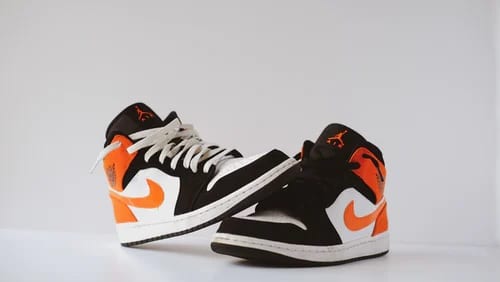
When purchasing jump shoes, you need to have some clarity on what it is that you hope to accomplish with them.
For those among you who just want shoes that will help you jump higher and increase the power output from your lower limbs, your options will center around Strength Shoes, Jumpsoles and APL Shoes.
If you aren’t looking for some form of performance enhancement or advanced strength training, there are basketball shoes on the market which are equally useful for those who want to record a good vertical, whether that be in testing or during a game situation. Those options will also generally cost you a lot less.
Read on to examine all of the options you actually have at your disposal!
Do Shoes Increase Your Vertical Jump?
There is compelling evidence that Strength Shoes and Jumpsoles can Increase Your Vertical Jump In Basketball. Both sets of shoes are equally effective for those who harbor ambitions of Jumping Higher In Volleyball.
The administrators of the NBA, which is the premier domestic basketball competition in the world, are generally wary about anything that can offer their athletes an unfair advantage on the court.
While Strength Shoes and Jumpsoles are obviously not a problem, the basketball governing body has actually banned the use of APL Shoes in the competition, as they are actually Shoes That Help You Jump Higher, regardless of natural ability.
The latter are classified as sports performance enhancers, not quite in the mold of EPO or something like that but performance enhancers nonetheless.
Collectively, these are the three obvious examples of shoes that can Increase Your Vertical Jump, but it is also worth noting that sports technology is constantly evolving.
Within a legal framework, the biggest sports apparel manufacturers in the world are always exploring opportunities to produce Basketball Shoes That Make You Jump Higher.
While the significance of training and sheer hard work can never be overstated, Shoes For Jumping Higher or Vertical Jump Shoes are definitely a thing - even though there will always be some debate on the extent to which these shoes will help or make you jump higher or indeed whether they are worth the purchase at all.
13 Basketball Shoes That Can Help You Jump Higher
Basketball Jumping Shoes need to be comfortable, they need to be light, they need to have good traction, they need to have good cushioning, they should offer good support and they should fit you well. They should also contribute in one way or another to some level of performance enhancement. Sometimes the less complicated options are just as good as the fancy scientific options.
A good indicator of whether they meet most of those requirements, is how well they sell, especially with online vendors.
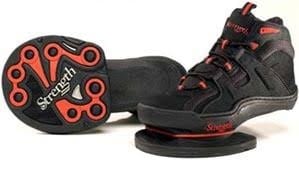
- What We Like:
If injury is avoided, they will definitely contribute to an increased vertical
They also contribute to better agility, granted you do not sustain an injury while training with them
They are actually pretty affordable, in the greater scheme of things
They are an easier and less complicated fit than other, similar options on the market
They are also better looking than all of the other options on the market
- What We Don’t Like:
They don’t allow you to walk, run or jump with a natural movement
Most people will find them to be uncomfortable
The shoes increase your exposure to injury
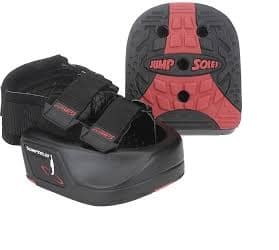
- What We Like:
They actually do contribute to an increased vertical
They also contribute to increased power output in your lower limbs
They come with a training manual and even a video
They are affordable, when you consider the other training tools required for jumping
- What We Don’t Like:
They put a lot of unjustified strain on your ankles and joints
They definitely contribute to more jump training injuries
Even if you are not injured, they are painful to walk, run and jump in and that can compromise the quality of your jump training
They are not an easy fit, as you need to be wearing other shoes to put them on
They are honestly the most hideous footwear currently available on the market, worse than crocs!
3- APL Shoes
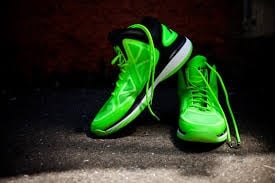
- What We Like:
They definitely do help you jump higher
They are incredibly light
They look and feel like normal shoes, because they are normal shoes!
For reasons stated above, they are the best fit among the performance enhancing options currently on the market
They limit your exposure to injury
They feature several stylish designs
These are shoes you want to buy, more than shoes that you need to buy
- What We Don’t Like:
This will only matter if your harbour ambitions of becoming a professional basketball player, but they are banned in the NBA...just so you know.
They can cost a pretty penny, although you are getting a considerable amount for what you are paying. A lot of jump science has gone into the design
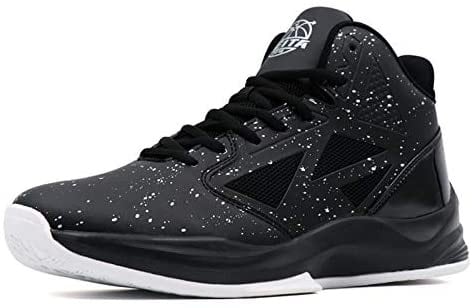
- What We Like:
The guys will only cost you $39.00
They are currently available in eight different colours - looks always matter
They have outstanding traction
They are lightweight
They are well ventilated
They support and protect the ankles
- What We Don’t Like:
Getting these shoes to fit well can be an issue for the uninitiated, because of the high tops
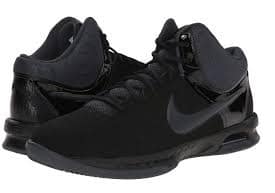
- What We Like:
The shoes are lightweight
They also fit well
They come with good traction
They come with sufficient ankle support
- What We Don’t Like:
They honestly look quite dull
There has been some negative feedback on durability
Some questions have been raised about comfort
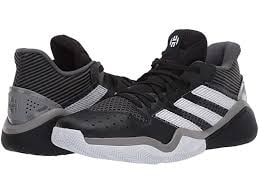
- What We Like:
The shoes have good breathability
The shoes are also lightweight
These guys are great for people who have wide feet
The range on colour is also great, for those who care about fashion on a basketball court
- What We Don’t Like:
Issues about comfort have emerged
There has been some feedback about a tight fit, that will have something to do with the laces
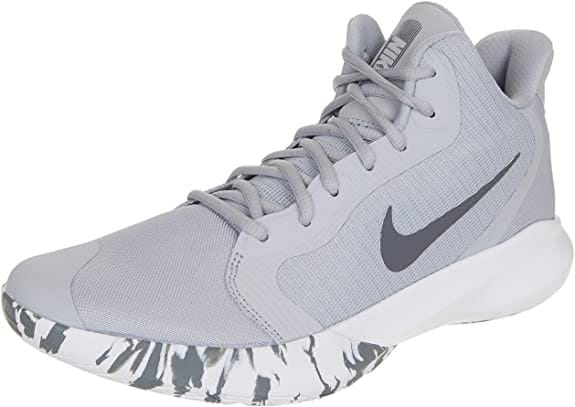
- What We Like:
The shoes have a rubber sole, which is great for traction
The shoes have a beautiful range of design
They offer good ankle and arch support
They offer up a great range of motion
Durability is an underrated quality in a basketball shoe and this one appears to tick all the boxes
- What We Don’t Like:
They can be a little tight for people with wider feet at the front
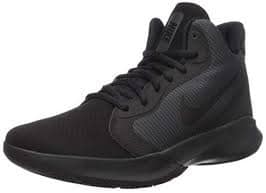
- What We Like:
They are good value for the money that you are paying
The shoes come with outstanding arch support
The shoes are durable and have a very strong sole
They offer good traction in all directions, so that means great for pivoting on court
- What We Don’t Like:
You might encounter some issues with finding a comfortable fit
Most vendors only seem to have these shoes in black. We guess it could be worse.
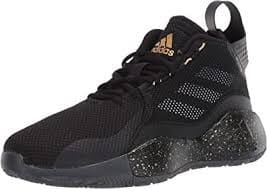
- What We Like:
The shoes are suitable for both men and women
They are totally synthetic
They have good arch and ankle support
They offer value for the money you are paying
- What We Don’t Like:
Again, there might be some issues with a loose fit
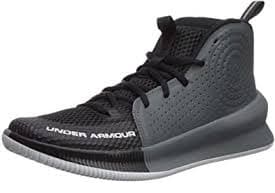
- What We Like:
The shoe offers great breathability
The shoe offers great underfoot cushioning and support
Great arch and ankle support
Great fit for those who have slightly smaller feet, perfect fit for women
- What We Don’t Like:
Not so much that we don’t like, other than they aren’t really an option for men or boys
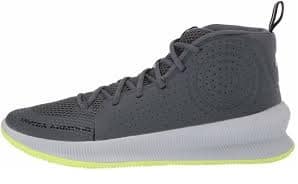
- What We Like:
Great variety available at top vendors
Suitable for both men and women
They are lightweight shoes, which makes them perfect for jumping in basketball
- What We Don’t Like:
Some people with bigger feet might find that they do not run so well
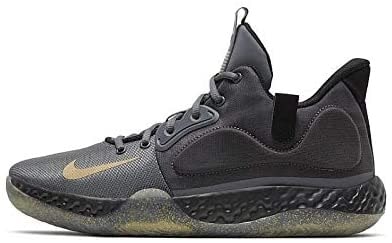
- What We Like:
They are flexible and breathe well
The rubber soles a durable
The shoes offer substantial comfort
The reinforced toe allows for the shoes to endure more abuse on the basketball court
The shoes offer a lot of traction on the basketball court
- What We Don’t Like:
Honestly, we have nothing negative to say
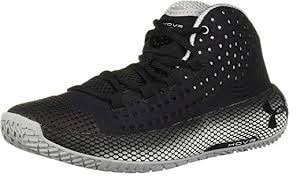
What We Like:
The shoe offers very good arch and ankle support
The shoes are well ventilated and they are comfortable
They honestly look beautiful and there are several options available to you
What We Don’t Like:
Those with smaller feet might have some issues with finding the right fit
What To Look For When Buying Jumping Shoes
1-) Traction
Plyometrics, being a common feature of jump training, is just one area in which the traction offered by a jump shoe matters considerably. People often get traction mixed up with grip.
Where grip is merely about the capacity to adhere to something, traction is more about not slipping or sliding when pulling away from a surface.
In the context of Jumping Plyometrics your shoes will be pulling away from the surface a considerable amount and then making contact with the surface again. Those regular and intense foot contacts increase your exposure to slipping and sliding on the basketball and that increases your exposure to injury.
Once you have sustained some form of injury while trying to jump on a basketball court, a trust deficit begins to emerge because your body remembers what it was like to fall and get hurt - all because of the shoe too.
At some point traction - or the lack thereof - in a jumping shoe becomes a mental issue and not so much a physical issue anymore. Your body’s instinct shifts from being prepared to throw the kitchen sink at it when you are trying To Jump Higher.
Suddenly, when you are preparing for that vertical, your body will begin to actually tell you to hold back when jumping. That trust deficit becomes so severe that you find yourself left with no choice but to buy a new pair of shoes for basketball, or volleyball...or even netball.
Traction is also heavily determined by the surface that you plan to train or compete on, which often hinges on the sport that you are taking part in. Sometimes it is just a very good idea to consult with your vendor about which shoes are best suited for which surface.
2-) Material
The material of a jump shoe is a more complicated affair. The material used for the cover of the shoe will not match the material used for the sole of the shoe and that is not likely to be the same as the material which you would ordinarily use for the inside padding of the shoe.
The material of the shoe even extends beyond that, as we are also talking about the tongue of the shoe in relation to the material of the laces. In the context of jumping or activities that require jumping, some form of balance needs to be struck with material.
While you are always searching for material that is light, you are also always searching for material that is durable.
Sometimes when you are searching for durability in shoes used for jumping, compromises will need to be made on comfort. We use the term compromise but what we really mean is balance.
When thinking about the material of the shoe, you also want to make sure that the fit of the shoe is not severely compromised by trying to secure a good fit for jumping.
When considering the purchase of shoes for jumping, you must also take into account the ventilation of that shoe or how well it breathes.
In a nutshell, the one element in the construction of a jump shoe that has a significant bearing on it all is indeed the material. When deciding on material you also need to decide what matters most to you.
Finally, there are some people who are just concerned about the impact on the environment. If that is the sort of thing that matters to you, then that will play a significant factor on the kind of jump shoe that you end up purchasing.
3-) Rubber
When purchasing shoes for jumping, you will essentially have a choice between rubber and synthetic soles. Now in the paragraphs above we waxed lyrical about traction in a jump shoe and the kind of sole you have has a considerable amount to do with that.
There are two things about rubber soles that should be of tremendous benefit to you.
Rubber soles are more likely to offer up some meaningful traction when jumping and they are also likely to last a little longer than synthetic soles, which wear away pretty quickly - despite not being the natural options.
Something else worth noting about synthetic soles is that they do not handle very well in the wet on or slick surfaces. So, it is a double whammy really!
Use a synthetic sole on a concrete surface and risk wearing them out quickly, use a synthetic sole on a smooth surface like wood and you increase your exposure to injury.
If for whatever reason, you are undecided about the jump shoe that you want to purchase, you are probably always better off purchasing the ones with a rubber sole.
4-) Cushion
Material, traction and the type of sole all have more to do with jump performance than they have to do with safety.
It feels a little like stating the obvious but with all the jumping that you plan on doing, your joints and overall skeletal structure takes a tremendous beating.
However, there are ways to help mitigate that and the kind of cushioning that you have in your jump shoes goes a long way to realising some of those objectives.
You want sufficient padding on the inside of your shoes, that helps protect the balls and arch of your feet, whether that be while taking off or when landing.
You also want sufficient cushioning at the front of your shoes, to help protect your toes from the impact that they are forced to endure while jumping and landing. You want cushioning that helps soften the blow when jumping - shoes that essentially assist with shock absorption.
5-) Support
You want shoes that offer up good arch support when jumping, which is really a good thing for your entire body. Arch support assists with the even distribution of pressure on your feet, especially with a movement like jumping where the range of movement can be so vast.
Having sufficient arch support in a jump shoe also means that you are going to have more luck with achieving balance - which is again at a premium when you are jumping. The more arch support there is, the less your body will have to compensate for some of the robust movement that is most associated with jumping.
Your feet can hurt a considerable amount during the course of a basketball or volleyball season too, what with all that training and competing against what we presume will be high quality opposition. Having sufficient arch support in your jump shoes helps mitigate that pain too. Less need for ice.
Finally, there are also those among you who are flat-footed and the shoes industry does not always place you at the forefront of its thinking. If you fall within that bracket, it would be prudent of you to do a thorough sweep of your store or vendor before making a purchase.
6-) Fit
A lot of the uncertainty about finding the right fit emerges from the country or region of the world, in which that shoe has been manufactured in relation to where it is being purchased.
We now live in a global village and so goods travel back and forth, without always keeping the consumer in mind.
This also extends beyond confusion about shoe sizes though. Even if you purchase a jump shoe with the right size, you might also notice that german shoes generally come as a looser fit, which caters for people with wider feet.
American shoes are generally made with a tighter fit, which makes life a little more uncomfortable for those with wider feet. These are some of the considerations you need to make when it comes to the fit of the shoe.
The Science Of Jump Shoes
The very essence of jumping revolves around the storage and release of explosive energy. The more energy you are able to store and release will determine the vertical jump that you record, so too will the amount of energy that you lose during that jump process.
And yes, you have guessed it, the shoes that you purchase for jumping can have a profound impact on how efficiently you use the energy required to jump higher.
The weight of your shoes will matter a lot, and there is evidence confirming that lighter shoes will contribute to better jump results. The heavier the shoe that you use for jumping, the more energy you waste and the more you compromise on the quality of your vertical.
The traction that your jump shoes offer also plays a significant role, because you will lose energy by putting more effort into securing your footing when jumping. That means that explosive power will be compromised when jumping, if you are slipping and sliding all over the court.
There is also compelling evidence to suggest that the stiffness of the shoe’s soles will have a profound impact on the joint energy lost in your lower limbs, which in turn has a meaningful impact on your jump height performance. It has been shown that stiffer shoes or midsoles contribute to a better vertical jump.
Conclusion
With all the basketball shoes that we mentioned above, the little things like cushioning, the right fit, traction, sole strength and the weight of the material all have a meaningful impact on your capacity to jump higher.
Before purchasing any of them, you need to have some clarity on just how much money you are willing to part ways with to realize some of your jumping goals and whether any added expenditure is really that much worth it.
Will these shoes be enough for you or do you really need something more “advanced” to train and jump with? Those are the choices that we leave in your court.
Hey, I’m Aleksandar and I am a Basketball freak! That is why I decided to create this blog. Teaching people How to dunk a basketball and How to Jump Higher in this sport or other related sports that require vertical jumping, is my specialty. If that’s your aim, then you have come to the right place.
